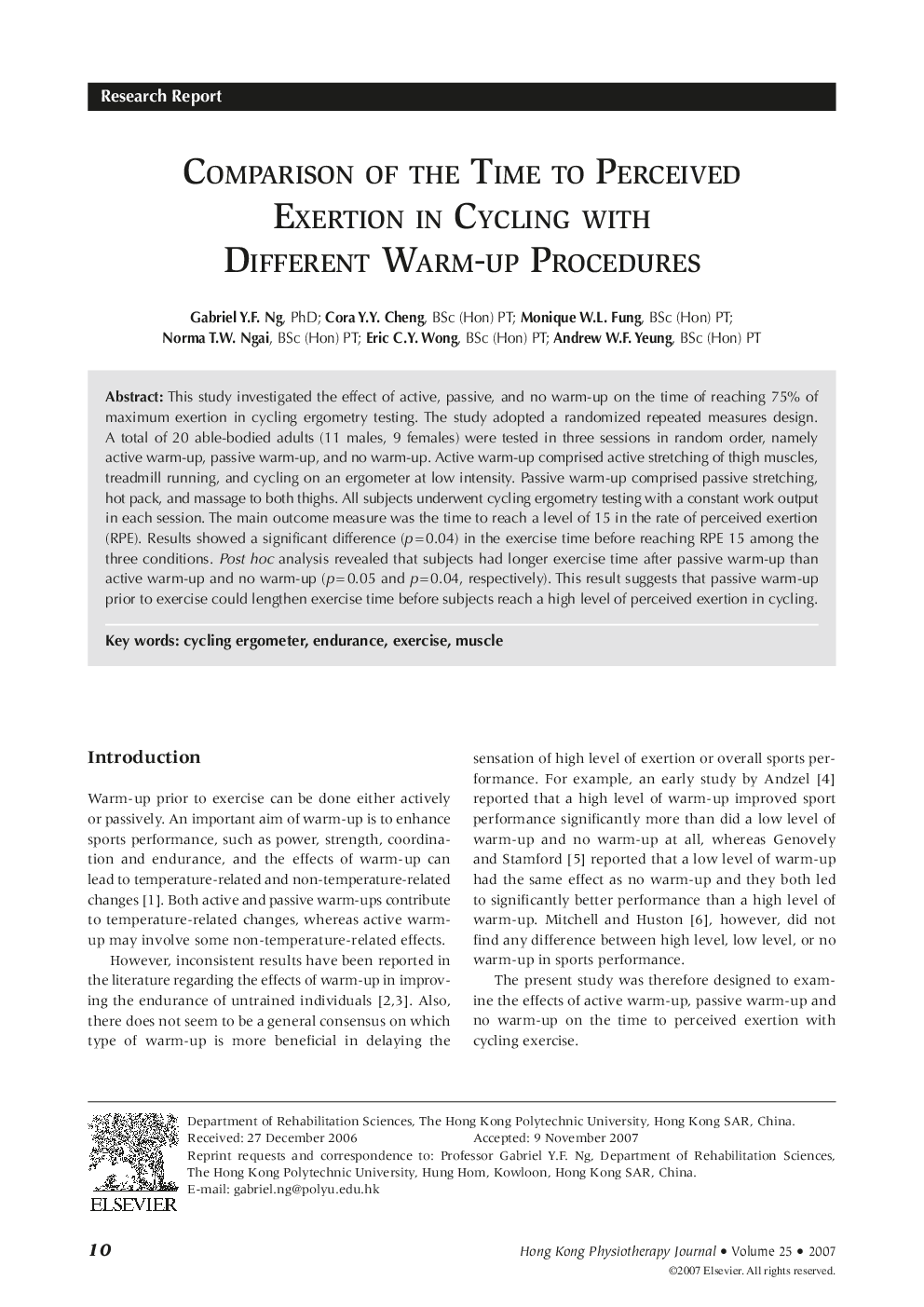| Article ID | Journal | Published Year | Pages | File Type |
|---|---|---|---|---|
| 2618385 | Hong Kong Physiotherapy Journal | 2007 | 4 Pages |
This study investigated the effect of active, passive, and no warm-up on the time of reaching 75% of maximum exertion in cycling ergometry testing. The study adopted a randomized repeated measures design. A total of 20 able-bodied adults (11 males, 9 females) were tested in three sessions in random order, namely active warm-up, passive warm-up, and no warm-up. Active warm-up comprised active stretching of thigh muscles, treadmill running, and cycling on an ergometer at low intensity. Passive warm-up comprised passive stretching, hot pack, and massage to both thighs. All subjects underwent cycling ergometry testing with a constant work output in each session. The main outcome measure was the time to reach a level of 15 in the rate of perceived exertion (RPE). Results showed a significant difference (p = 0.04) in the exercise time before reaching RPE 15 among the three conditions. Post hoc analysis revealed that subjects had longer exercise time after passive warm-up than active warm-up and no warm-up (p = 0.05 and p = 0.04, respectively). This result suggests that passive warm-up prior to exercise could lengthen exercise time before subjects reach a high level of perceived exertion in cycling.
